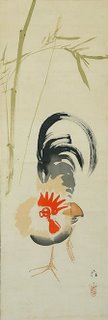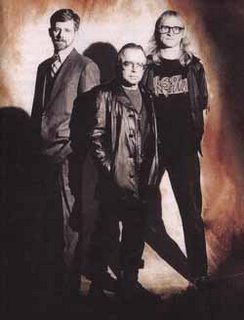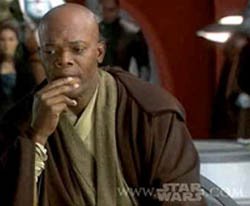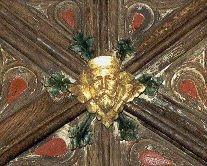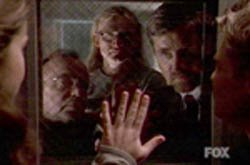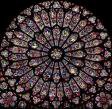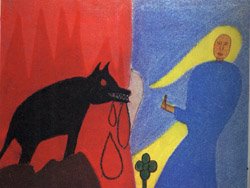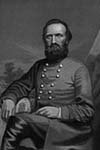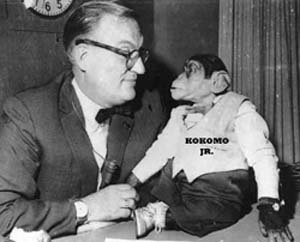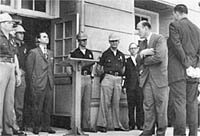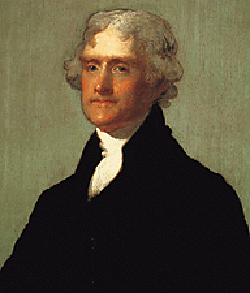 . . . I went out searching . . . looking for one good man . . . a spirit who would not bend or break who would sit at his father's right hand . . . Johnny Cash/U2
. . . I went out searching . . . looking for one good man . . . a spirit who would not bend or break who would sit at his father's right hand . . . Johnny Cash/U2
William Butler Yeats, Irish poet and essential guide for much of this here leading perspective, once claimed that he didn’t like the poetry which most of his readers liked. You can see why occationally. Sometimes he appears to really spells it out lest the C student miss the drift, but the spirit fades with the explanation. It is interesting and I believe it would make him good in certain translations, particularly into Japanese, as there is a singular Zen, iconic quality to Yeats' poetry. Reading D.T. Zuzuki's Zen and Japanese Culture, Yeats poetry comes to mind and would seem a perfect fit. I think John Millington Synge would as well. (I'd love to see a Kabuki or Noh theatre version of Riders to the Sea. The Japanese would understand. The Americans do not.) Perhaps because Yeats brings from the mecurial river and carries to the rational perspective and Zen in Japan, as Dr. Suzuki illumates it in his classic text on the cultural influence and Buddhism, does the same. Yeats' prose sings more freely and even his second-hand stories of Ireland, dictated to Lady Gregory, have a kind of folk-loric flair. A particularly iconic poem in this regard is his most famous, The Second Coming, which has the famous line, Slouching toward Bethlehem - fire borrowed perhaps more than any other, very often without giving the muse credit. In the millenialist fever between 1994 and 2005, perhaps no other line was more universally nicked.
Much of the poem is actually a simple astrological diagram about the Age of Pisces coming to a close and the Age of Aquarius beginning. The Piscean Age began with the birth of Jesus, and the Christ is visualized in the poem as a hawk flying upward and forming a circle, but flying so high and for so long that the spiral begins to give way and loses its integrity. As with Europe’s failing Christendom, “the center no longer holds.” Nothing really is left to the imagination here. It is all spelled out. The poem follows to the end in darkness, anticipating a new messiah for a new age, but a messiah and an age without Europe's traditional wise rabbinical guide of Solomon and his Spirit Son, the Christ; the Light out of Egypt. Instead, is a Rough Beast, which some considered to be Stalin and others Hitler, rising out of Europe and leading the Aquarian age into Darkness.
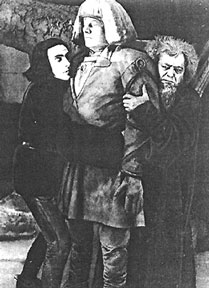 Yeats had other thoughts on the matter although most of his life’s work is recalled in that single page. His short story "Gift of the Magi" in the volume Mythologies, presents a better Aquarian messiah - a Unicorn born to a prostitute in a Paris slum. His Rough Beast poem, incidently, was written in 1920, the same year as the German movie, The Golem, directed by Paul Wegener was presented (to the left). As he was an outgoing member of the continental avante garde, it is a film he well might have seen. But like the great historian Oswald Spengler of his creative era, he really didn’t see the Euro world as dying and he didn’t really believe in death. The Rough Beast poem represents the flip side/the dark side of his inner life, but in an increasingly nihilistic age, it became the favorite of the common culture. In truth, Yeats saw the world entering metamorphosis, with light turning to dark and dark revealing light.
Yeats had other thoughts on the matter although most of his life’s work is recalled in that single page. His short story "Gift of the Magi" in the volume Mythologies, presents a better Aquarian messiah - a Unicorn born to a prostitute in a Paris slum. His Rough Beast poem, incidently, was written in 1920, the same year as the German movie, The Golem, directed by Paul Wegener was presented (to the left). As he was an outgoing member of the continental avante garde, it is a film he well might have seen. But like the great historian Oswald Spengler of his creative era, he really didn’t see the Euro world as dying and he didn’t really believe in death. The Rough Beast poem represents the flip side/the dark side of his inner life, but in an increasingly nihilistic age, it became the favorite of the common culture. In truth, Yeats saw the world entering metamorphosis, with light turning to dark and dark revealing light.
His book Mythologies outlines some of his experiences in the occult. He appears to have gone as deeply into the Unconscious as a European could without sustaining lasting psychosis in his day.
Yeats’ life personifies the shift in sensibilities between the Age of Pisces and the Age of Aquarius. Reared in the tradition of Ireland’s Church of England and the European mystic/poet quest who when looking inward would characteristically seek out a rabbi in a cave, he turned East instead. He joined the Madame Blavatsky’s Theosophical Society of London and looked to Tibetan Buddhism and the Orient for inner wisdom.
From then to now, pilgrims have continued to Turn East, trekking across the Hindu Kush and the Himalayas. But increasingly, the East has come to us and saved us the journey.
the Himalayas. But increasingly, the East has come to us and saved us the journey.
This shift in sensibility can be seen simply as a shift of the pilgrims’ gaze: Looking East instead of to Egypt, and replacing the Wise Guide of rabbi with that of Monk.
As folk lore sometimes reveals the archetype at work and tells the story of the inner life of a people, this shift in sensibility begins with the ancient Prague folk tale of the Rabbi and the Golem. I expect Yeats knew the tale. Any researcher interested in the occult would find it. It has deep significance for Europe to follow, and for the West. I see it as quite possibly a model for Yeats’ poem, The Second Coming.
occult would find it. It has deep significance for Europe to follow, and for the West. I see it as quite possibly a model for Yeats’ poem, The Second Coming.
The story of the Golem is prelude to the Frankenstein story and other more recent conjurings, but its origin goes back to 16th century Prague. Rabbi Loeb was a wise and well-respected rebbe and he created a Golem to help the people in his village with their work and to defend them against anti-Semitic attacks. But the Golem got out of his control and ran amok. Today in Prague, local legend has it that the Golem haunts the city.
From the view of an Outsider (Extrovert - on the outside of the vision) – a European Christian – looking to an Insider (Introvert - from the inside of the vision) – a European Rabbi – for inner guidance, this story has great significance. The Rabbi is conjurer, and the rabbinical culture which conjured the Son - the Christ - at the beginning of the age, has lost its sacred abilities at the end of the age. The Inner Life of Christianity approaches a close in Europe as the Renaissance becons. The Inner Life of the European Christian is over as Jesus scorns the Mother (Mother Earth) and rises strong, muscular and masculine to the Sky in Michaelangel's famous painting in the Sistene Chapel. What the Rabbi conjures now is dangerous and out of control. Yeats’ twenty centuries by the rocking cradle (the Baby Jesus, the Deathless Child - twenty centuries equals a Platonic Month, an astrological age) have passed and the Aquarian is coming (the Second Christ); but a rough beast, which Slouches towards Bethlehem to be born.
Here is the new messiah, the body of a lion and the head of a man (which has Aion, the lion-headed man and a symbol of the new Christ in reverse), an out-of-control brute. The rabbi has lost his power and the Christian age grows dim, the centre cannot hold and anarchy is loosed upon the world.
 Yeats wrote the poem in 1920, but the Golem has seen many incarnations since. Tolkien’s Rings stories have the Golem to be sent away and the Hobbits to stand on their own two furry feet and look again to their own Original Myths. Indeed, the Golem in these tales as well suggests Rabbi Loeb's creation as he is the traditional Bearer of the Ring – the wisdom of God perhaps, just as the European rabbi was the bearer of the Light out of Egypt to Europe - which has proved to be too much for a small in-between and becoming species to bear. Other tales as well, the Bartimaeus book, The Golem's Eye, for example, likewise
Yeats wrote the poem in 1920, but the Golem has seen many incarnations since. Tolkien’s Rings stories have the Golem to be sent away and the Hobbits to stand on their own two furry feet and look again to their own Original Myths. Indeed, the Golem in these tales as well suggests Rabbi Loeb's creation as he is the traditional Bearer of the Ring – the wisdom of God perhaps, just as the European rabbi was the bearer of the Light out of Egypt to Europe - which has proved to be too much for a small in-between and becoming species to bear. Other tales as well, the Bartimaeus book, The Golem's Eye, for example, likewise seeks to find the Prague Golem and put out his singular eye. All these tales imply abandoning the traditional wisdom of the rabbi – his Creation is passing, his Sacred Child a hydra-headed beast like that described in Revelations. In their way these are end-game myths for the European Christian and particularly the English Christian.
seeks to find the Prague Golem and put out his singular eye. All these tales imply abandoning the traditional wisdom of the rabbi – his Creation is passing, his Sacred Child a hydra-headed beast like that described in Revelations. In their way these are end-game myths for the European Christian and particularly the English Christian.
 Comic books and movies provide us today and post-war with naïve art. Artists and writers in pop culture create freely – there are no teachers or critics available, no awards given to inhibit creativity. In the 30s, 40s and 50s in particular, no one was watching. And watching changes the product conjured. Stan Lee's comic masterpiece The X Men today is able to gather the greatest of actors because of the innocence and clarity of Lee’s original story telling. The X Men brings in an Aquarian vision, expressing mutation of consciousness, and a new people on the earth, with varied psychic and psychological gifts. But notice Lee’s terrific shadow production as well – kind of a down market version of The X Men – The Fantastic 4.
Comic books and movies provide us today and post-war with naïve art. Artists and writers in pop culture create freely – there are no teachers or critics available, no awards given to inhibit creativity. In the 30s, 40s and 50s in particular, no one was watching. And watching changes the product conjured. Stan Lee's comic masterpiece The X Men today is able to gather the greatest of actors because of the innocence and clarity of Lee’s original story telling. The X Men brings in an Aquarian vision, expressing mutation of consciousness, and a new people on the earth, with varied psychic and psychological gifts. But notice Lee’s terrific shadow production as well – kind of a down market version of The X Men – The Fantastic 4.
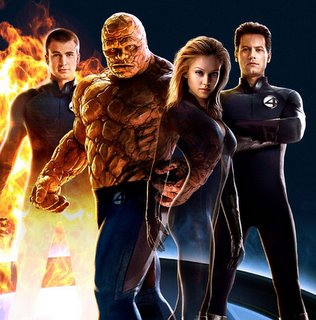 The 4 are not completely fantastic. Their story presents the classic mythical Quaternity – the four-cornered vision of the godhead which occurs archetypally in all cultures in the world (see Sir James G. Fraser's work) – Father, Son Holy Ghost and Mary/Psyche. And here it occurs with us in the world as well. But there are issues with this god-head. The Father figure is made of rubber and has problems making decisions (because he is afraid of Psyche . . . in another Quaternity movie, Spielberg's Jaws, the Chief is also afraid of Psyche, presented as she is most commonly presented in dreams, as the Ocean - the fear is manifest as vagina dentata, a Death Mother archetype; the Shark, a man-eating toothy vagina). Psyche seems intact and so is fire-boy - presumably the Holy Ghost - although he has a little trouble controlling his powers. The real problem is the Thing. In the classic Quaternity, the Thing is supposed to the Son (in Pisces, the Christ). His name is Ben ("The Son" in Hebrew) and he has been replaced in Prague by Rabbi Loeb with Golem. And here he is a Golem. Lee, the Artist-in-Innocence, see’s with the Child’s Eye and sees ourself as we are now, as we truly are. (In contrast, the current Narnia movie is a Quaternity in which the Psyche [Witch] is sick and the Spirit is completely absent. Only Son [Lion] and Father [Santa?] have positive relevance. As its author is an apologist for old Britannia, perhaps this is an appropriate vision of Empire at its end, in the hands of the Death Mother. I see it as a Shadow production of the great genious work of author's co-worker and true visionary, Tolkien. Shadow, as in Tolkien/Lewis, Beatles/Rolling Stones, Emerson/Thoreau, Emily Bronte/Charlotte Bronte, Christianity/Islam, Capitalism/Communism . . . Seinfeld, on the other hand is a virtually perfect
The 4 are not completely fantastic. Their story presents the classic mythical Quaternity – the four-cornered vision of the godhead which occurs archetypally in all cultures in the world (see Sir James G. Fraser's work) – Father, Son Holy Ghost and Mary/Psyche. And here it occurs with us in the world as well. But there are issues with this god-head. The Father figure is made of rubber and has problems making decisions (because he is afraid of Psyche . . . in another Quaternity movie, Spielberg's Jaws, the Chief is also afraid of Psyche, presented as she is most commonly presented in dreams, as the Ocean - the fear is manifest as vagina dentata, a Death Mother archetype; the Shark, a man-eating toothy vagina). Psyche seems intact and so is fire-boy - presumably the Holy Ghost - although he has a little trouble controlling his powers. The real problem is the Thing. In the classic Quaternity, the Thing is supposed to the Son (in Pisces, the Christ). His name is Ben ("The Son" in Hebrew) and he has been replaced in Prague by Rabbi Loeb with Golem. And here he is a Golem. Lee, the Artist-in-Innocence, see’s with the Child’s Eye and sees ourself as we are now, as we truly are. (In contrast, the current Narnia movie is a Quaternity in which the Psyche [Witch] is sick and the Spirit is completely absent. Only Son [Lion] and Father [Santa?] have positive relevance. As its author is an apologist for old Britannia, perhaps this is an appropriate vision of Empire at its end, in the hands of the Death Mother. I see it as a Shadow production of the great genious work of author's co-worker and true visionary, Tolkien. Shadow, as in Tolkien/Lewis, Beatles/Rolling Stones, Emerson/Thoreau, Emily Bronte/Charlotte Bronte, Christianity/Islam, Capitalism/Communism . . . Seinfeld, on the other hand is a virtually perfect piece of folk lore and a perfect Quaternity, Jerry being God/Father; suggesting New York City was not a bad place to be when the show was aired. J.J. Abrams' Lost has a hidden Quaternity as well, beautiful and complex, and awakening anew a full spectrum of sacred mysteries for the third millenium. Frasier is a Quarternity as well & it is way interesting that there were West Coast and East Coast Quarternities going on with different cultural characteristics simultaneously in the naive culture [Frasier and Seinfeld] at the turn of the millenium- the Frasier character having moved from Boston. My thoguth to the NYTs at the earthquake in Seattle . . . "Those disasters are birth pains." - Kurt Cobain the Monkey God.)
piece of folk lore and a perfect Quaternity, Jerry being God/Father; suggesting New York City was not a bad place to be when the show was aired. J.J. Abrams' Lost has a hidden Quaternity as well, beautiful and complex, and awakening anew a full spectrum of sacred mysteries for the third millenium. Frasier is a Quarternity as well & it is way interesting that there were West Coast and East Coast Quarternities going on with different cultural characteristics simultaneously in the naive culture [Frasier and Seinfeld] at the turn of the millenium- the Frasier character having moved from Boston. My thoguth to the NYTs at the earthquake in Seattle . . . "Those disasters are birth pains." - Kurt Cobain the Monkey God.)
Although Yeats’ famous poem was written long ago, byy all means, our rebbes still guided us, and the Three Celestial Ones who would awaken and orient the energies in the waning century of Pisces would all be three rebbes - Freud, Marx and Einstein. Post-war we are better off perhaps, and in my lifetime, the three rebbes who have created our world have had far more comprehensive visions. Indeed they were masterful Dreamworkers, and created the movie studio DreamWorks; Steven Spielberg, Jeffrey Katzenberg and David Geffen. David Geffen was there when Joni Mitchell arrived on the scene, and when John Lennon was shot and he was everywhere in between. But the great rebbe from this group was Steven Spielberg.
 It was Spielberg (photo by Genaro Molina / LAT) who brought us out of the earth and out of the Vistorian Age and up into the skies in Close Encounters of the Third Kind and to find friends there in the Universe in E.T., psychologically one of the most important turning points in human history some depth psychologists claim. And it is he who has brought us back to earth.
It was Spielberg (photo by Genaro Molina / LAT) who brought us out of the earth and out of the Vistorian Age and up into the skies in Close Encounters of the Third Kind and to find friends there in the Universe in E.T., psychologically one of the most important turning points in human history some depth psychologists claim. And it is he who has brought us back to earth.
Last week this most influencial art and culture enterprise of the 20th century folded. The great rebbe and the most influential artist of our time, Steven Spielberg, has conjured his last vision, the movie Munich, which opens to the public on December 23.
No doubt he will work again, but Spielberg has made his last movie for DreamWorks. It is the end of an era, and it is an era which arched millennia and Platonic months.
Most interesting to our times is that Spielberg has a Twin, George Lucas, his early partner. But Spielberg is the wise rebbe, Lucas the Tibetan Monk. Star Wars, Lucas' Quaternity, produced and amended by Spielberg, was whole and intact, but its roots were in the East - in Zen, in Tibetan Buddhism and Taoism and in the tradition of the master film work of Akira Kurosawa. Together, Lucas and Spielberg have conjured the new millennium.
Spielberg is the wise rebbe, Lucas the Tibetan Monk. Star Wars, Lucas' Quaternity, produced and amended by Spielberg, was whole and intact, but its roots were in the East - in Zen, in Tibetan Buddhism and Taoism and in the tradition of the master film work of Akira Kurosawa. Together, Lucas and Spielberg have conjured the new millennium.
Today, Lucas actually does sign on to the Campaign for Tibet to help occasionally on special projects. His early Star Wars films are textbook Taoism, with parts like the lightsword fighting with blindfolds taken directly from the classic text, Zen and the Art of Archery by the German philosophy professor teaching in Japan, Eugen Herrigel. The Star Wars myth, based originally on Kurosawa's 1958 film, Hidden Fortress, has brought us to the East far more effectively than Yeats, Madame Blavatsky or even The Beatles. Lucas has also hosted the PBS series The Power of Myth at his Skywalker Ranch in California, with Bill Moyers interviewing mythologist Joseph Campbell. Nothing has more effectively and without egregious error turned Hollywood's gaze East and explained Eastern principle to the masses who view pop culture.
Spielberg has taken a different tact. As Lucas was didactic guru, Spielberg was both conjurer and citizen. He has been both rebbe and good citizen, bringing to the public works like Shindler's List to enlighten the public to the horrors of the Holocaust and The Color Purple, which, without his assistance, would have remained a small and special interest prose work. Because of Speilberg, it is intrinsically part of the fabric of American cultural life.
No doubt he has noticed that he has created his own Golem as well. Novelist and commentator Curtis White has written that with all good intentions to create a popular story to honor the sacrifice and nobility in warfare of the common men who served their country in World War II in Saving Private Ryan, what has evolved unexpectedly is an American culture of militarism, with a new generation striving for heroism to be like “the greatest generation” in a war of unintended consequences. A war poised now to engulf the entire Middle East in a pan-Islamic popular front which could threaten the very existence of Israel.
 Spielberg's final DreamWorks projects, a remake of War of the Worlds, which was, in my opinion, his best film ever, and Munich were released within months of each other. Munich has drawn controversy. As Rachel Abrahmson writes in an interview with Spielberg in the LA Times,"The film examines one of the pivotal moments in modern terrorism — the killing of 11 Israeli team members by Palestinian terrorists at the 1972 Munich Olympics — and then focuses on the secret hit squad assembled by the Israeli government to track down the perpetrators and assassinate them. It's a 30-year-old story that resonates today, and the thought of wading into the virulent Middle East animosities, with all of their moral conundrums, has daunted most American artists — even those who don't come with the pulpit and responsibility, which clearly weighs on him, of being not only Hollywood's most famous director but its most public Jew. He's the one who made the Oscar-winning "Schindler's List," about the Holocaust, and devoted all of his earnings from the film to his Shoah Foundation, which has been collecting the oral histories of Holocaust survivors."
Spielberg's final DreamWorks projects, a remake of War of the Worlds, which was, in my opinion, his best film ever, and Munich were released within months of each other. Munich has drawn controversy. As Rachel Abrahmson writes in an interview with Spielberg in the LA Times,"The film examines one of the pivotal moments in modern terrorism — the killing of 11 Israeli team members by Palestinian terrorists at the 1972 Munich Olympics — and then focuses on the secret hit squad assembled by the Israeli government to track down the perpetrators and assassinate them. It's a 30-year-old story that resonates today, and the thought of wading into the virulent Middle East animosities, with all of their moral conundrums, has daunted most American artists — even those who don't come with the pulpit and responsibility, which clearly weighs on him, of being not only Hollywood's most famous director but its most public Jew. He's the one who made the Oscar-winning "Schindler's List," about the Holocaust, and devoted all of his earnings from the film to his Shoah Foundation, which has been collecting the oral histories of Holocaust survivors."
It is significant that Spielberg's final DreamWorks project is about Isreal.
"[The film's] a discussion — it's like the Talmud is a series of discussions. It's just like Sodom and Gomorrah, where Abraham bargained with God about 'how can you punish the righteous with the wicked?' The film is a series of structured arguments between the members of the Mossad teams that reflects different points of view and allows you to choose the one that more easily fits how you see the conflict. And maybe even better can maybe change your mind about how you felt about this," he told Abramowitz.
Questions, he points out, are an inherent part of the Jewish faith: "My whole life as a Jew has been a series of arguments; we're always arguing and discussing. The movie is certainly told from the Israeli point of view. But it is told with a great deal of empathy. I just wanted to put empathy in every direction, because the situation is not cut and dried. I was not interested in telling that kind of a tale of vengeance and I didn't want this to be a morality play, the way that 'Private Ryan' is a morality play."
He has been accused by his critics, some of them engineers and propagandists - fellow travellers and extremists of the neo-cons and Christian Zionist movement - as being ambivalent in a situation one should not be ambivalent about.
"The simple truth is sometimes we have to choose from bad options," Spielberg told Abramson. And sometimes there are unintended results." Answering aggression with aggression "creates a vicious cycle of violence with no real end in sight."
And sometimes there are unintended results." Answering aggression with aggression "creates a vicious cycle of violence with no real end in sight."
The LA Times did a survey of public opinion, mostly Israeli and Arab, of those who attended screenings when the movie opened. Robin Harrington, a talent agent said, "The message is 'You can't fight violence with violence' - that we have to find another way. If that's controversial, we're in trouble."
It can't be missed that Spielberg pleased neither Jew nor Arab with Munich. And for a final word in his final day at the last gala opening of a career which like no other life and career has shaped value, mores and opinions in an American-dominated world since the 1970s, the director calls forth a new rebbe.
The phrase about answering agression with agression creating a vicious cycle of violence, is pure Tolstoy. In his writing on peace and non-violence, Tolstoy took as the central meaning and purpose of the Christ's life and work the phrase, "do not return violence with violence." All of Tolstoyan philosophy is built on this phrase and this interpretation of the New Testament. It was this which he passed on to Ghandi in correspondence when Ghandi said he could not find non-violent strategy in the Hindu texts (although these sentiments are clearly phrased in Buddhism, which are Hindu texts). this phrase is the core sensibility of the non-violence movement from Tolstoy, to Ghandi, to Martin Luther King, Jr. and the Peace Movement of the in 60s. Tolstoy pointed out in his journals that this is an inherently American vision, designed by him but through the study of the American Transcendentalists, particularly Ralph Waldo Emerson, Henry David Thoreau and Yankee anti-slavery firebrand preacher Theodore Parker.
I don't think it is impossible to be a citizen/rabbi. They live on different sides of the river. But I find it moving that Spielberg ends a career of such vast world influence on this note.
Ambivalence is the clear public lesson in War of the Worlds as well. The movie starts with Tom Cruise, who plays the protagonist, driving a derrick high in the sky above New York City, a machine virtually identical to those - the Tripods - which the Alien invaders will drive shortly after in the movie. There is something then of the Golem in both the father (Tom Cruise) and in the Alien Tripods. E. T. was an Aquarian vision. As the Light came "out of Egypt" in the passing era, it comes now to us from the Universe. As film critic Stanley Kaufman implied in his early review of Close Encounters of the Third Kind these are sacred events; events in the history of faith. In E.T. we come to share the Light of the Universe. In War of the Worlds we share the Darkness as well.
who plays the protagonist, driving a derrick high in the sky above New York City, a machine virtually identical to those - the Tripods - which the Alien invaders will drive shortly after in the movie. There is something then of the Golem in both the father (Tom Cruise) and in the Alien Tripods. E. T. was an Aquarian vision. As the Light came "out of Egypt" in the passing era, it comes now to us from the Universe. As film critic Stanley Kaufman implied in his early review of Close Encounters of the Third Kind these are sacred events; events in the history of faith. In E.T. we come to share the Light of the Universe. In War of the Worlds we share the Darkness as well.
The tension between the forces of the East and the traditional Western wisdom has been palatable for the last 20 years or so. But I saw the moment of transition directly in the year 2000, with Ang Lee’s Crouching Tiger, Hidden Dragon, a runaway favorite at the Oscars.
Lucas – and the 30-year Star Wars project – is prelude to the millennium. Crouching Tiger is the millennium to which we have been sailing since Columbus headed out to the Spice Islands.
 Like Spielberg, Lee does both creative popular movies and more serious dramas. But Spielberg's what might be called "citizen" films - Color Purple, Shinldler's List - always at least intent to improve the quality of American life and world culture. With Lee, I'm not so sure. I'm not so sure he will prove to be as good a citizen as Spielberg has tried to be. Lee's "serious dramas" are loved by critics, but any artist with the abilities of Spielberg and Lee can well anticipate and engineer critical responce, particularly those in the most influencial newspapers in New York and Los Angeles, where the criticism is as predictable as sleet in winter. But Lee's 1997 film The Ice Storm seems undergraduate work designed to increase his status among critics - faux Bergman - a Bergman movie without the Bergman - without the lost quest for God; without the helplessness of a post-war Swede seeking authenticity in a cold climate and a broken world; without the individual playwright's genious - a knock off. In this movie and those like it, one is never sure whether the film maker unveils hypocracy and dual standards . . . the Lonely Crowd, prejudice and class strife, alienation a la Antoniani, husbands screwing their secretaries, tectonic cultural shifting as in Bertolucci's Before the Revolution, or a cronic "emo" condition, as my kids put it (emo has reached saturation point with teens: " . . . if I had opposable thumbs I'd cut myself!" is the current dark humor of unbridled youth) . . . so as to improve the human condition, or celebrates instead the curruption of the American condition and rather eggs it on. In the end, some of these movies are doppelgangers - the autonomous shadow face of power which merely takes its life force in opposing power. There is never a trace of this with Spielberg. But Lee's Taiwanese movies are different. His great film, Eat, Drink, Man, Woman finds healing and wholeness in an environment broken by fate. And Chrouching Tiger, Hidden Dragon goes to the core of Eastern mythic sensibilities; a masterpiece of Taoist passion and yielding power. Perhaps it is that in making Chinese movies Lee experiences his Positive Face, and in making American movies he experiences its Dark Face. Time will tell: Bergman, Antoniani and Bertolucci are on a worthy path. Their movies can be looked at over a lifetime as one coherent artistic passage. Spielberg as well follows and creates a distinctly American vision and his life is our life. But imitators yield to time and become as charicatured in rerelease as World Extreme Cagefighting.
Like Spielberg, Lee does both creative popular movies and more serious dramas. But Spielberg's what might be called "citizen" films - Color Purple, Shinldler's List - always at least intent to improve the quality of American life and world culture. With Lee, I'm not so sure. I'm not so sure he will prove to be as good a citizen as Spielberg has tried to be. Lee's "serious dramas" are loved by critics, but any artist with the abilities of Spielberg and Lee can well anticipate and engineer critical responce, particularly those in the most influencial newspapers in New York and Los Angeles, where the criticism is as predictable as sleet in winter. But Lee's 1997 film The Ice Storm seems undergraduate work designed to increase his status among critics - faux Bergman - a Bergman movie without the Bergman - without the lost quest for God; without the helplessness of a post-war Swede seeking authenticity in a cold climate and a broken world; without the individual playwright's genious - a knock off. In this movie and those like it, one is never sure whether the film maker unveils hypocracy and dual standards . . . the Lonely Crowd, prejudice and class strife, alienation a la Antoniani, husbands screwing their secretaries, tectonic cultural shifting as in Bertolucci's Before the Revolution, or a cronic "emo" condition, as my kids put it (emo has reached saturation point with teens: " . . . if I had opposable thumbs I'd cut myself!" is the current dark humor of unbridled youth) . . . so as to improve the human condition, or celebrates instead the curruption of the American condition and rather eggs it on. In the end, some of these movies are doppelgangers - the autonomous shadow face of power which merely takes its life force in opposing power. There is never a trace of this with Spielberg. But Lee's Taiwanese movies are different. His great film, Eat, Drink, Man, Woman finds healing and wholeness in an environment broken by fate. And Chrouching Tiger, Hidden Dragon goes to the core of Eastern mythic sensibilities; a masterpiece of Taoist passion and yielding power. Perhaps it is that in making Chinese movies Lee experiences his Positive Face, and in making American movies he experiences its Dark Face. Time will tell: Bergman, Antoniani and Bertolucci are on a worthy path. Their movies can be looked at over a lifetime as one coherent artistic passage. Spielberg as well follows and creates a distinctly American vision and his life is our life. But imitators yield to time and become as charicatured in rerelease as World Extreme Cagefighting.
It is significant that the big "Christmas Movie" this year is Memoirs of a Geisha, based on a novel written by an American man which followed in the popular interest in Buddhism ten years back when Brad Pitt starred in the film adaptation of Heinrich Harrer's excellent and illuminating journey book, Seven Years in Tibet, and Buddhism became a pop cultural fashion. There is little of the East in the Geisha book, except of those parts of the East which resemble the West, and much of Old Japan does - which makes it easy to digest and understand because we already know it. But it is significant for this century which we are moving into that we in the West begin now on a massive pop culture scale to look to the East for beauty and wisdom with such significant productions.
Seven Years in Tibet, and Buddhism became a pop cultural fashion. There is little of the East in the Geisha book, except of those parts of the East which resemble the West, and much of Old Japan does - which makes it easy to digest and understand because we already know it. But it is significant for this century which we are moving into that we in the West begin now on a massive pop culture scale to look to the East for beauty and wisdom with such significant productions.
Spielberg was originally scheduled to direct Geisha, but the production was plagued by difficulties and delays.
"It's an incredibly delicate story. I can't just say 'OK, that's the next hamburger I need to make.' I have to get my head around it first," he said back in 2001. Then after several years of development he pulled out altogether as director, although he is still listed as a co-producer.
 When he opted out, he chose instead to direct A.I. A.I. is a movie about a high-tech mechanical boy adapted from the Pinnochio story. What is interesting about this is that Pinnochio is an Old World adaptation of the Golem myth, and so A.I. is a contemporary adaptation of Golem. It is interesting because when Spielberg took us to space he found the true child, the Deathless Child, in E.T., but on return to earth we find the false child, and substitute instead a kindler, gentler hi-tech Golem. But kind though it may be and tamed, it is still not the True Child. The story is about the creation of a Son which is not a real son, but a son which takes on a life of its own. This is a common dream story, quite often occurring in men like the dreamer who recently shared his dream for my interest. He was a man in late middle age (Spielberg's age, my age) and had lost his work and family. He dreamed that he was carving a god out of a tree with a chain saw. This is the Pinnochio/Golem dream archetype. He has no ego to return him as he did to drive him ourward. He must find a guide. This dream occurs late in a man's life, when he must return to himself, and to the Unknown and the Unconscious from whence he came. But in a culture and in an age which has not yet found its lasting traditions, he finds no god, no hero, or rabbi to lead him Inward. He finds no child to Lead Him to the Peaceable Kingdom. The Self - the sacred center of Psyche - is silent, and the dreamer is left at wits end, lost and alone. Spielberg's AI movie reflects this. The Silence of God is as palitable as in Bergman's Winter Light. The ocean which was filled with psychic danger in Jaws is now empty of all psychic contents; the Psyche sends no salvation. The end of a zodiac era is also suggested when the boy is sent to silently stare at an underwater statue of the Blue Fairy for two thousand years, only to see it crumble before he is relieved of his task by aliens. In the end, neither Mother nor Child, which represent the full motif of the passing zodiac age of Pisces, are real - one is robot, one a clone - but they both die anyway. In the last scene I was reminded of the final chapter of Andre Malraux's Man's Fate where the two revolutionaries share a cynide capsure.
When he opted out, he chose instead to direct A.I. A.I. is a movie about a high-tech mechanical boy adapted from the Pinnochio story. What is interesting about this is that Pinnochio is an Old World adaptation of the Golem myth, and so A.I. is a contemporary adaptation of Golem. It is interesting because when Spielberg took us to space he found the true child, the Deathless Child, in E.T., but on return to earth we find the false child, and substitute instead a kindler, gentler hi-tech Golem. But kind though it may be and tamed, it is still not the True Child. The story is about the creation of a Son which is not a real son, but a son which takes on a life of its own. This is a common dream story, quite often occurring in men like the dreamer who recently shared his dream for my interest. He was a man in late middle age (Spielberg's age, my age) and had lost his work and family. He dreamed that he was carving a god out of a tree with a chain saw. This is the Pinnochio/Golem dream archetype. He has no ego to return him as he did to drive him ourward. He must find a guide. This dream occurs late in a man's life, when he must return to himself, and to the Unknown and the Unconscious from whence he came. But in a culture and in an age which has not yet found its lasting traditions, he finds no god, no hero, or rabbi to lead him Inward. He finds no child to Lead Him to the Peaceable Kingdom. The Self - the sacred center of Psyche - is silent, and the dreamer is left at wits end, lost and alone. Spielberg's AI movie reflects this. The Silence of God is as palitable as in Bergman's Winter Light. The ocean which was filled with psychic danger in Jaws is now empty of all psychic contents; the Psyche sends no salvation. The end of a zodiac era is also suggested when the boy is sent to silently stare at an underwater statue of the Blue Fairy for two thousand years, only to see it crumble before he is relieved of his task by aliens. In the end, neither Mother nor Child, which represent the full motif of the passing zodiac age of Pisces, are real - one is robot, one a clone - but they both die anyway. In the last scene I was reminded of the final chapter of Andre Malraux's Man's Fate where the two revolutionaries share a cynide capsure.
This dream of carving a god out of wood or making one artificially in some other way, occurs in movies and pop culture when the culture attempts to return to itself. In Jaws, Spielberg's vagina dentata dream about an incipient fear lurking in the Psyche just beneath the surface was not necessarily a dream about his own personal life. It was certainly a dream about our collective life in 1975. It was an American dream and a world dream. And Spielberg's dream today is our dream as well.
That Spielberg would make such a selection as A.I.at this critical juncture in history is significant. Turning from the East, he sought within to find a guru but the guru he sought was silent. Perhaps the Tolstoy suggestion in Munich will open the new path for him and be a new Awakening. We should hope so because Spielberg is probably one of the five most important people in the world since the Eisenhower age. His role to us has been more cultural shaman than rabbi. And as a tribesman in Africa once said to C.G. Jung, what the shaman dreams is most important to the village. Likewise, in the Global Village. In very real terms, our fate lies in his dream world and in his understanding himself and his work. He is our shaman. He dreams on our behalf. It is his job to find the True Child and to bring us to him. As it was with the Three Magi, pointing under the star in Bethleham to the Piscean at the beginning of another age, so it has been the responsibility of Geffen, Katzenberg and Spielberg to guide us today, and to find for us the True Child again. Our fate and our salvation lie in the successful accomplishment of this task.
When I was in an enlisted man in military service in Thailand in 1967 and 1968, few Westerners coming to the East for the first time seemed to thrive and Awaken as if from a slumber. But I did. Typically, Americans missed home. Maybe still, most Westerners when they come to the East will find an edge that they can't cross into and turn back. I think that is true. And maybe, as the East continues to come to us now, it will always be like that and we will retreat. And it will only be for introverts.
Spielberg's final film Munich was filmed in Isreal and his closest confidants and long-time creative assistants are often Israeli. When Ang Lee and his crew rushed up onto the stage on Academy Awards night to receive their many Oscars for Crouching Tiger, I couldn't help but notice that all of our new rebbes will now be Asian.
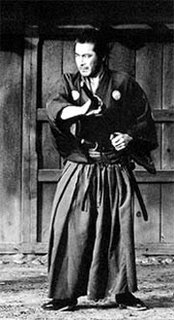 possibly survive, but he strutted through the yard with his usual cockiness until noon with no sign of weakness, even looking for a fight, then found a quiet place under a piece of sheet rock to wait quietly for his death.
possibly survive, but he strutted through the yard with his usual cockiness until noon with no sign of weakness, even looking for a fight, then found a quiet place under a piece of sheet rock to wait quietly for his death. when the age passes. To the defaulted man/boy of Computer World, information is not power, it is a distracting dance of light, distracting him from the fear that Lord Krishna instructs him to resist: the fear that prevents him from becoming himself. Better to go mad and die on the river like Mr. Kurtz.
when the age passes. To the defaulted man/boy of Computer World, information is not power, it is a distracting dance of light, distracting him from the fear that Lord Krishna instructs him to resist: the fear that prevents him from becoming himself. Better to go mad and die on the river like Mr. Kurtz. And it is not a guy thing, it is a cultural thing - a yang thing. When Hayley Wickenheiser led the Canadian woman’s hockey team to gold victory in the 2002 winter Olympics, head coach Daniele Sauvageau gathered the team around her after the victory for a final word on the virtues that would carry the women and their families through the difficult times in their lives. She said three words: Responsibility, Determination and Courage.
And it is not a guy thing, it is a cultural thing - a yang thing. When Hayley Wickenheiser led the Canadian woman’s hockey team to gold victory in the 2002 winter Olympics, head coach Daniele Sauvageau gathered the team around her after the victory for a final word on the virtues that would carry the women and their families through the difficult times in their lives. She said three words: Responsibility, Determination and Courage.